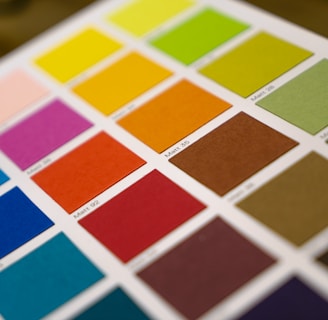The Influence of Color Psychology in Interior Design
Victoria White
11/10/20232 min read


Color is a dynamic and influential element in the world of interior design. It possesses the remarkable ability to shape the mood and atmosphere of a space, eliciting emotions and even influencing behavior. The impact of color on human emotions and physiology is a captivating aspect that holds immense significance for interior designers.
Individual Responses to Color
It's crucial to recognize that each person responds to color in a unique way. Cultural backgrounds and personal experiences play a pivotal role in shaping individual perceptions and reactions to color. This underscores the importance for interior designers to collaborate closely with clients, understanding their preferences and the desired emotional ambiance for their living or working space.
Physiological Impact of Color
Beyond the emotional and psychological aspects, colors can also have a physiological impact on the human body. Studies have shown that certain colors can affect heart rate, blood pressure, and even appetite. This physiological dimension adds another layer of complexity to the art of color selection in interior design.
Creating Well-being Through Intentional Use of Color
By intentionally incorporating color into their designs, interior designers can create spaces that enhance the well-being of their clients. The deliberate use of color can contribute to a more positive and welcoming environment, promoting a sense of comfort and satisfaction.
The Emotional and Mood Influence of Colors
Different colors evoke a wide range of emotions and moods. A skilled interior designer harnesses this knowledge to create spaces that convey specific atmospheres. Understanding primary, secondary, and tertiary colors, as well as their relationships, enables designers to craft aesthetically pleasing and emotionally impactful color combinations.
Cultural Significance of Color
Color is not merely a visual element; it is also deeply cultural. The meanings and associations of colors vary across cultures, and understanding these differences is crucial for designers. By taking a thoughtful and culturally nuanced approach to color selection, designers can create spaces that reflect the personality, cultural background, and values of their clients.
Color Psychology in Branding
Color psychology extends beyond personal spaces to corporate environments. In the realm of branding, understanding the cultural and emotional connotations of colors is essential. A thoughtful and strategic approach to color selection helps businesses connect with customers from diverse cultural backgrounds, fostering a sense of unity and resonance.
Practical Considerations in Color Selection
Practical considerations, such as the type of business, desired atmosphere, lighting, and available space, all play a role in the development of a unified and powerful color scheme. Utilizing tools like the color wheel, considering the impact of lighting, and testing colors in the actual space contribute to a well-rounded and effective approach.
The power of color psychology in interior design goes beyond aesthetics. It is a dynamic tool that, when wielded with intention and understanding, can transform spaces into environments that not only look appealing but also positively impact the emotions, well-being, and experiences of those who inhabit them.


